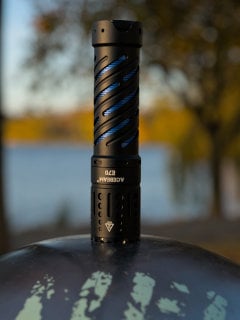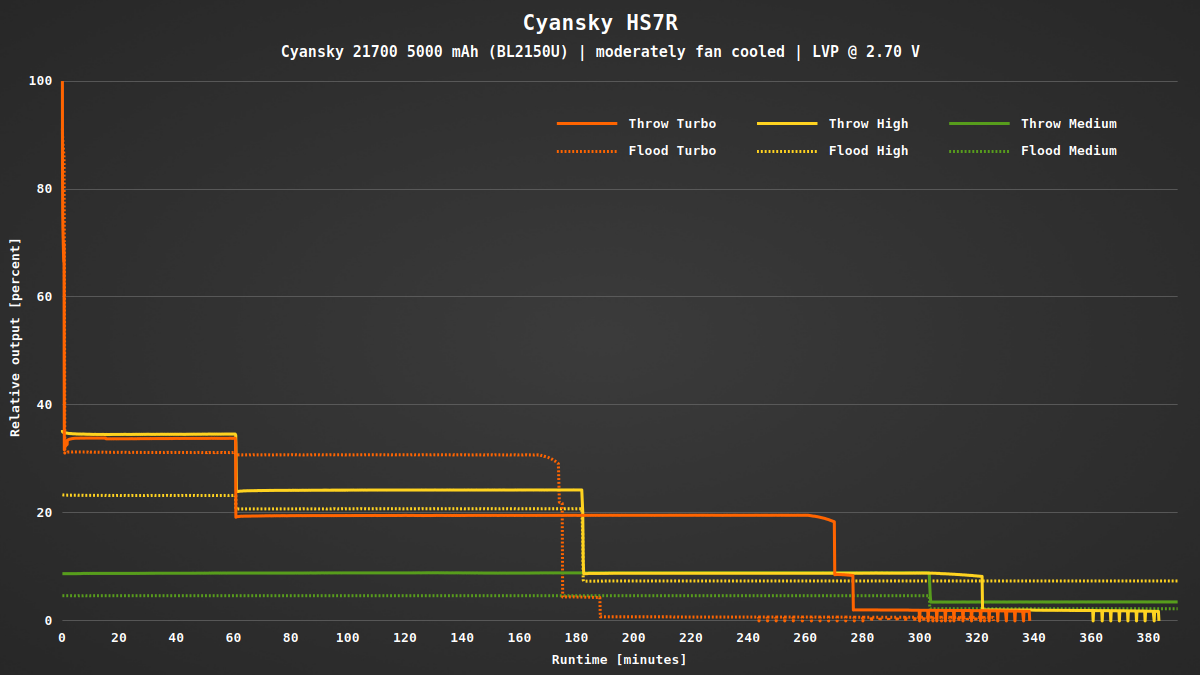This proprietary battery that Nitecore uses for all their latest generation tactical flashlights is the reason why I don’t buy or recommend them. It would have been easy to avoid these batteries.
Software developer from Germany with interests in programming, electronics, flashlights, calculators, writing instruments and various outdoor activities.
Visit my website for more info and updates.
See also: /u/[email protected]
- 17 Posts
- 44 Comments

 1·1 year ago
1·1 year agoPut your hand in front of a 120 W bulb. Does it get warm?
Question is: What do you want to achieve by using a black body radiator? It won’t give you any fancy colors, just a pretty smooth spectrum.

 1·1 year ago
1·1 year agoSeven levels of brightness for the white channel, two for R/G/B/UV. Only one color at a time. Next to the RGB disco mode there’s also a red SOS, a read beacon and a white strobe.

 2·1 year ago
2·1 year agoYou can order the dual channel D4v2 with a deep red channel (660nm) and UV channel. ;)
Get it with the additional 18350 tube and optionally magnet in the tailcap. Costs more or less the same as the MiX-7, but only comes with two channels and has no internal charging. On the other hand it will have Anduril.
It will look like this: https://www.reddit.com/r/Hanklights/comments/16ans11/dual_channel_uv_d4kd4v2kr4/


 2·1 year ago
2·1 year agoIndeed, if you want RGB with more power than just aux LEDs, it might be a good choice (althout RGB has just two brightness levels). It’s also a great high CRI + UV candidate (alternatively you could consider a dual channel Emisar D4v2 with 519A and UV).

 1·1 year ago
1·1 year agoI don’t really like the input lag on the switch which is unusual for a “tactical” light
Which input lag do you mean? When it press the switch, my light turns on immediately.

 1·1 year ago
1·1 year agoDon’t compare the flashlights you’ll find here in c/flashlight with these cheap flashlights with fake lumen ratings. 😉

 1·1 year ago
1·1 year agoHuh? That never happened with any of my flashlights. Mechanical tail switches are pretty reliable.

 1·1 year ago
1·1 year agoIt performs OK, a little hard to press completely, though. Momentary mode works great, but it requires some force to press the switch completely. Apart from that it is reliable and relatively pocket-safe.

 4·1 year ago
4·1 year agoThere is also an image showing the laser engraving:

If you want to go professional, there isn’t much choice. Either The Sofirn/BLF LT1 or the smaller Sofirn LT1S Pro. Both have the Anduril operating system with a very complex, but also very powerful UI, they have adjustable color temperature and brightness – both either stepped or smooth – and the LT1S Pro even has a red channel!

 2·1 year ago
2·1 year agoCan this actually do a sustained 800lm for 6 hours per the manufacturer spec?
I don’t think so. If you ignore the stepdowns in my runtime measurement and assume that it can maintain high level all the time, I’d say the total runtime at 800 lm will be more like 3 hours. Which is more or less what you get from the flood channel after the initial stepdown. Turn it on at turbo, wait 30 seconds for the stepdown and then you’ll get almost 3 hours at roughly 750 lm.

Wann geht es denn hier weiter? Durch die Deföderation ist ein großer Teil meines Netzwerks weggebrochen, sodass ich mir dort jetzt einen weiteren Account angelegt habe. Das kann eigentlich nicht der Sinn eines dezentralen Netzwerks sein. Klar, ich könnte mir eine eigene Instanz aufsetzen, auf die nur ich Zugriff habe, aber das erscheint mir etwas übertrieben. Lemmy bräuchte für so einen Fall eine Single-User Version. Vielleicht gibt es sogar schon irgendein System mit ActivityPub, das so funktioniert… Mal schauen.
Awesome! I think c/flashlight is a really great alternative to r/flashlight, especially if more people would post here.
And thanks for the giveaway!

 2·1 year ago
2·1 year agoWurkkos TS12, compact 14500 thrower:

 3·1 year ago
3·1 year agoYes, you could (theoretically) use an emulator for the microcontroller. I tried it a few times. And it isn’t fun. It takes a lot of effort to simulate all inputs, outputs are hard to interpret and all kind of effects of the real light aren’t reproduced.
In reality we flash the build onto a flashlight and try it. Sometimes it’s only a prototype, disassembled. And rarely it’s an actual devboard which has all relevant parts of the flashlight nicely accessible (basically the microcontroller with required electronics, regulated power supply, low power LED to see the output, several LEDs for aux and button and the switch itself).

 3·1 year ago
3·1 year agoThe UI of the Manker E02 II is very similar to the Skilhunt UI. Low group with 6 (?) levels of very low light, medium level and turbo. Not sure how it could be much shorter. Same for the ZebraLight, it can’t be any shorter to fit a AA (except for the H50 which doesn’t have a reflector).

 2·1 year ago
2·1 year agoI noticed this usability issue of lemmy as well. The photo is the one you can set as the URL for the post and a thumbnail of it should be shown at the top. Here’s an embedded version of it:




Hmm… seltsamer Effekt: Mein Beitrag ist auf anderen Instanzen vorhanden, aber hier – von wo er ursprünglich stammt – ist er verschwunden: https://lemmy.world/post/10106501